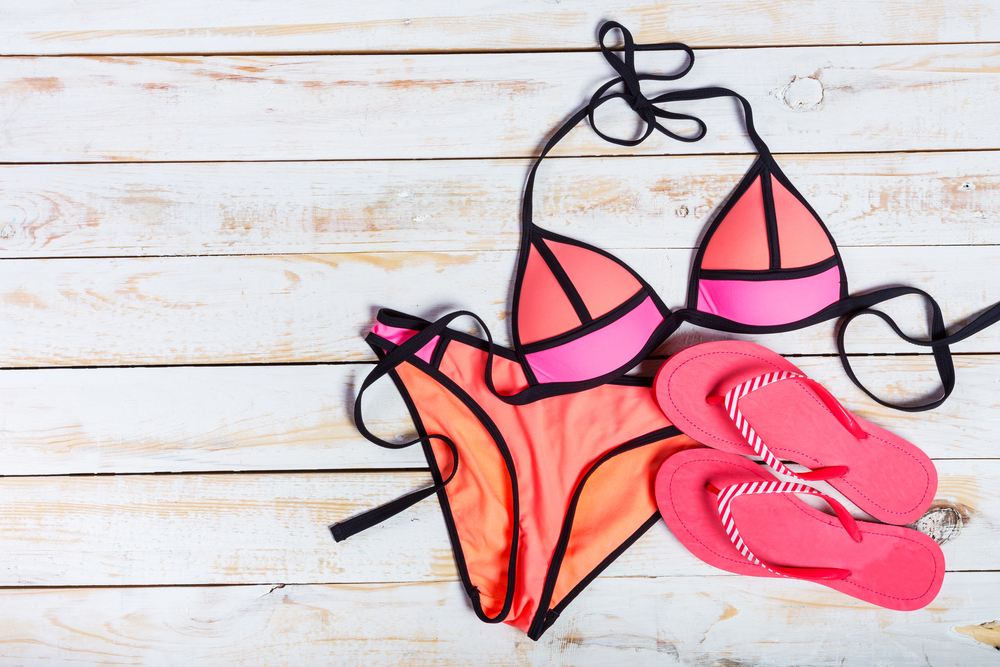Choosing the Best "Naughty" Bathing Suits: Fit, Fabric, and Style
Looking for a daring swimsuit that still feels comfortable and secure? This guide explains how to evaluate fit, fabrics, coverage, and styling so you can choose a cheekier design that suits your body and the occasion without compromising on support or durability.

Shoppers often use the word “naughty” to describe swimsuits with bolder cuts—think cheeky backs, deep plunge necklines, cutouts, and strappy silhouettes. Selecting one that feels confident yet functional comes down to understanding sizing, how fabrics behave in and out of water, and which construction details influence support and coverage. The aim is to balance allure with comfort and appropriateness for the setting, whether it’s a resort pool, a private beach day, or a festival-style pool party.
About the “naughty” range: overview
“Naughty” is typically a style descriptor rather than a single brand. It often covers designs with reduced coverage, higher leg lines, string or micro-bikini shapes, mesh or lace-up panels, and hardware accents. While eye-catching, these pieces still vary in structure: some rely on minimal seams and stretchy fabric, while others add underwire, boning, or double-lining for support. Consider how much reveal is intentional for your comfort level, and note that what looks minimal on land may feel even skimpier once the fabric relaxes in water. Reading product descriptions for lining, adjustability, and support cues helps set expectations.
Fit and sizing guide
Accurate measurements matter more as coverage decreases. For two-pieces, match your top and bottom sizes rather than defaulting to sets; a snug-but-not-constricting band and adjustable straps help keep the top anchored. For triangle and bandeau shapes, look for side stays or wider ties to distribute tension. Underwire or longline tops can provide lift without adding bulk. On bottoms, cheeky and Brazilian cuts should sit flat at the hip without digging—a clean line usually indicates the right size. If between sizes, consider the fabric blend: higher spandex content can accommodate a slightly smaller size, while stiffer fabrics may require going up for comfort. Move-test at home (reach, twist, sit) to ensure coverage holds.
Materials, construction and coverage
Common swim fabrics include nylon-spandex and polyester-spandex blends. Nylon blends feel soft and stretchy, offering a sleek hand and a body-hugging fit, but can be more sensitive to chlorine and suntan products. Polyester blends resist fading and chlorine better, often holding shape longer. Look for double-lining in light colors or minimal-coverage areas to reduce transparency when wet. Quality indicators include:
- Fabric weight with recovery that snaps back after stretching.
- Clean, even stitching; bartacks at stress points; and hidden seams where possible.
- Adjustable ties or sliders in straps for a customized fit.
- Secure hardware that’s non-corrosive (often coated metal or durable plastic).
Coverage cues appear in product terms: “cheeky,” “Brazilian,” and “micro” suggest reduced back coverage; “high-leg” elongates the look but may lift fabric off the hip; “plunge” or “monokini” signals deeper necklines or cutouts. Balance reduced coverage with features like wider bands, halter support, or underbust elastic if you want more stability.
Styling tips and suitable occasions
Context matters. For public beaches or family-friendly pools, a cheeky bottom with a more supportive top can strike a tasteful balance. Private settings or adult-only resorts often allow bolder choices like micro tops, side-tie bottoms, or cutout one-pieces.
- Balance silhouette: pair a minimal bottom with a more structured top, or vice versa.
- Layer smartly: a sheer sarong, crochet dress, or camp shirt adds coverage when moving off the sand.
- Coordinate textures: matte fabric can tone down a revealing cut, while shine or foil finishes amplify impact.
- Footing and accessories: slides or espadrilles, a wide-brim hat, and understated jewelry complement a striking suit without competing.
- Activity check: for swimming laps or water sports, prioritize secure straps and fuller coverage; reserve delicate styles for lounging.
Care, durability and buying considerations
Proper care prolongs life, especially for delicate designs. Rinse your suit in cool water after each wear to remove salt, chlorine, and oils. Hand-wash with a gentle cleanser; avoid bleach and fabric softeners that break down elastane. Dry flat in shade—heat can degrade stretch fibers and warp hardware. Rotate between multiple suits to reduce stress on a single favorite. When shopping, review return policies because fit nuances vary across cuts. Scan customer photos for real-world coverage cues, and note that light colors or white may need double-lining to prevent show-through. If modesty panels, removable cups, or adjustable ties are included, they can extend use across different settings and comfort levels.
Final thoughts
A “naughty” swimsuit can be both expressive and functional when you pay attention to fit, fabric behavior, and construction details. By aligning coverage with your comfort and the setting, and by caring for the materials properly, you’ll get a suit that feels intentional, secure, and styled to match the moment.




